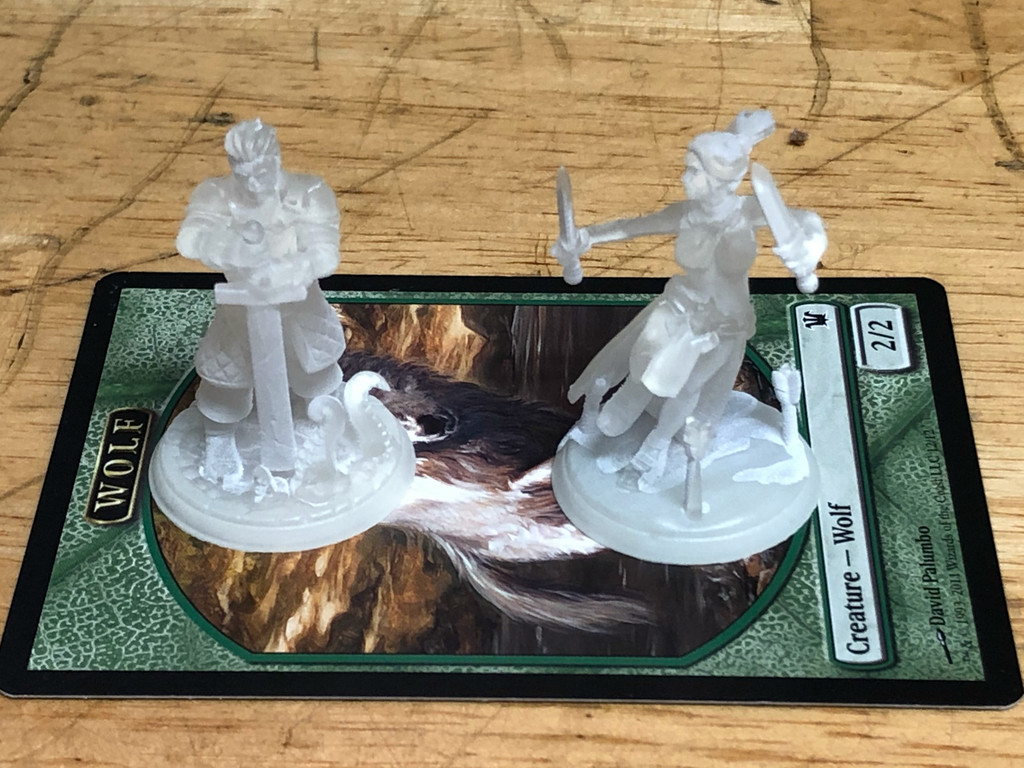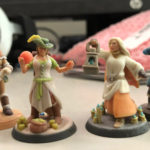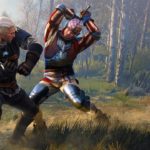A week or two ago, I went to Hero Forge and downloaded 3D models of two of my Octopath Traveler minis, Olberic and Primrose. I’d fixed Olberic’s sword to resemble the one he used in game a little better. Primrose is a mini we haven’t seen before.
I thought they’d be fun to fiddle with, maybe learn how to paint.
I downloaded the latest version of FreeCAD and started teaching myself how to play with 3D models.
The STL files delivered by Hero Forge are not solid models. They are skins comprised of thousands of very tiny polygons with no thickness. The idea is that, when printed, the 3D printed software “slices” the model into horizontal bits like some sort of plastic salami, then traces these out, a layer at a time, with plastic, perhaps adding some infill along the way so that they don’t collapse like tissue.
3D programs, however, build things out of smaller 3D objects, like cubes, spheres, ellipsoids and so on that they add, subtract, and deform until they look like something recognizable.
So they are fundamentally different ways of describing a 3D object.
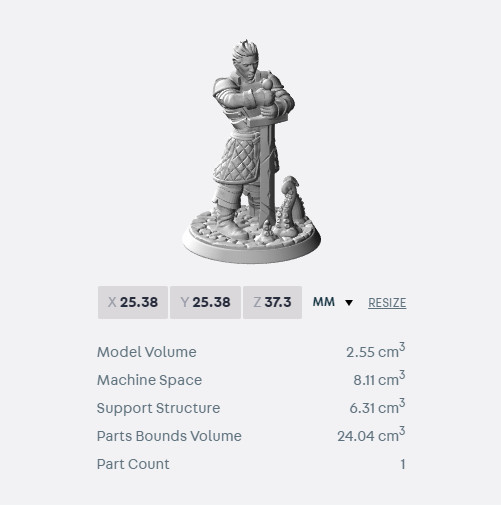
It was such a daunting prospect that I decided to just focus on painting the models I downloaded. Since I don’t have a 3D printer, I’d have to send them off to be printed. I sent them to Shapeways, the same printer Hero Forge uses.
I chose a high quality plastic rendering method. This method was a good balance of price and quality. You can pretty much spend as much money as you like on successively better prints made from successively more valuable materials. I knew from the color prints I’d already received that the detail in these minis was going to be very hard to reproduce, so I wanted to give it as best a chance as I could.
The prints came today. And they weren’t exactly what I expected.
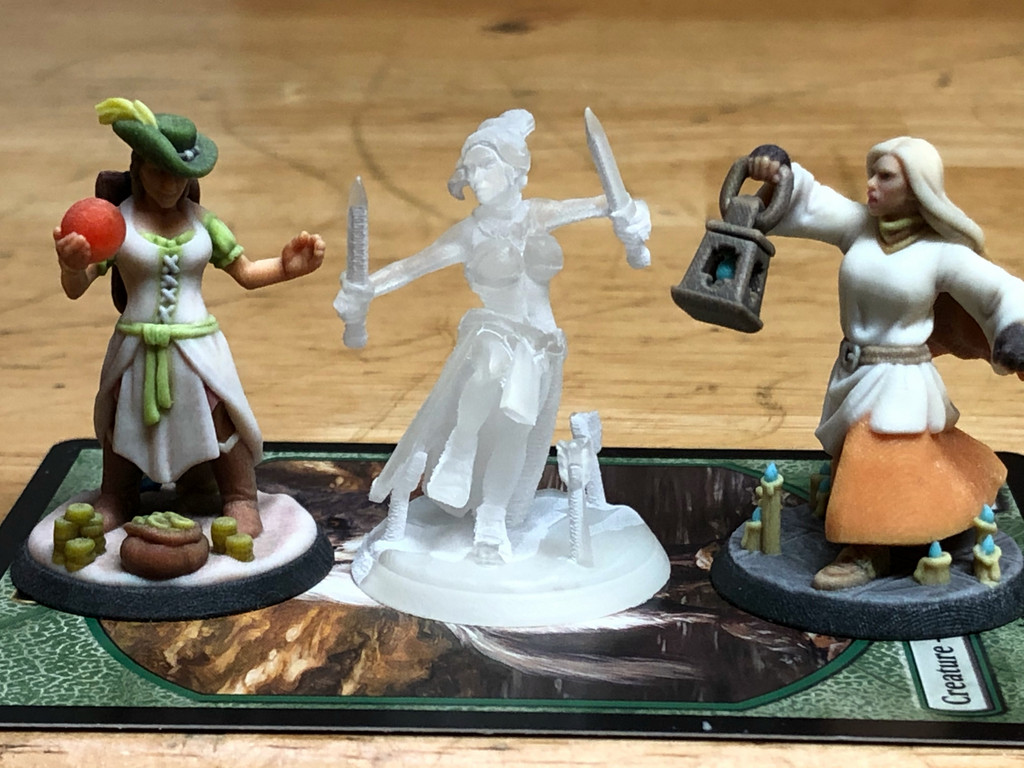
I haven’t shown (I don’t think) the models for the other four Travelers. Primrose is the Dancer (and eventually Starseer) of the crew. She’s on a mission of vengeance against the people that killed her father and destroyed her family.
She came printed in a translucent plastic with very fine layer lines. According to the order sheet, she was printed with a small amount of infill and had substantial scaffolding to hold her arms and leg up as she was printed. This scaffolding was probably manually removed before it was shipped to me.
You can easily see that the detail on the filament-printed Primrose versus the sintered Tressa and Ophilia is much sharper. Part of that is due to the scoring on the plastic where the scaffolding was removed. When held in hand, though, it all feels fairly smooth, and should look better when primed.

Similar deal with Olberic. Aside from the sword, the model is identical to those used for his color prints. It’s easy to see just how good the coloring on the color prints is. It easily makes up for the minor loss of detail.
Like Primrose, plastic Olberic’s outline is crisp and sharp. Less scaffolding was needed for his model, but you can again easily see where it was removed. I think Shapeways uses more scaffolding than a hobbyist might use in order to ensure a good print first try. Nonetheless, the modelers at Shapeways know what they’re doing and there’s no trace of the scaffolding remaining.
The next step is to prime them. The local game shop is open again, so I’ll probably be heading down there fairly soon to get some supplies. I have the coloring scheme for Primrose on Hero Forge, and of course I have Olberic’s right here with me. Should be fun
